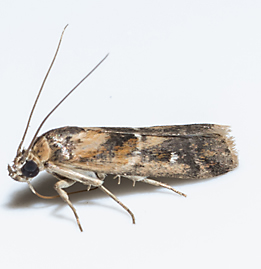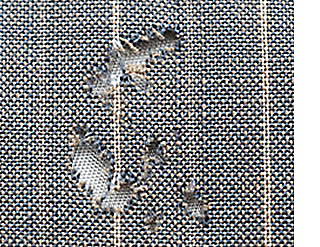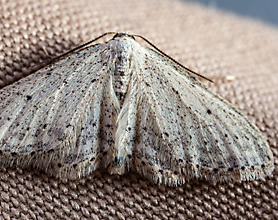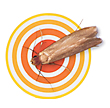CLOTHES MOTHS
Are clothes moths munching through your favorite sweaters and jackets? TERRO® Clothes Moth Traps can help get rid of these destructive moths and keep them away.
SHOP MOTH CONTROL PRODUCTS >>What are Clothes Moths?

Moths come in all different varieties but there is one type of moth that is a common enemy to most homes. Clothes moths are household pests that are drawn to fabrics throughout the home. It's not really the moths themselves that do the damage but more so, the larvae.
Clothes moths like to lay their eggs on fabrics that may have gone unattended for a short period of time. They particularly like clothing with stains or sweat that larvae can use to get the vitamins they need.
What Attracts Clothes Moths?

Clothes moths like moist areas of the home because they don’t drink water and need to get moisture from the clothes they eat. Human sweat left on clothing provides the dampness they need. These moths are attracted to common things found in our closets and even throughout the home including:
- Cotton
- Wool
- Carpet fibers
- Curtains
- Upholstery
In addition, they avoid light and prefer dark undisturbed places to reproduce. Closets, basements and attics are common places where clothes moths will set up a home.
Are Clothes Moths Harmful?
These moths are not harmful but can do damage to clothes and other fabrics in the home. Recovering from an infestation can be expensive and time-consuming. Preventing an infestation can be done simply by washing clothes and vacuuming regularly.
What do Clothes Moths Look Like?

While some moths are hard to identify, clothes moths have a similar appearance as a group. Their small ½-inch bodies are typically a light beige color and their wings have small little hairs. They are sometimes mistaken for pantry moths, but they are duller in color compared to the reds and browns you see with pantry moths.
It is not just the adult moths that you need to look out for but the larvae as well. In this stage of their life, these creamy white caterpillars are up to ½-inch long. They are often found in webbing on the surface of materials and around holes that have been consumed within the fabric.
The Clothes Moth Life Cycle
Clothes moths start out so small they likely will not be seen. Adult moths lay about 40-50 eggs over a three-week period. Between 10 and 30 days, the eggs hatch into the fabric creating larvae that are ready to find food. Thriving comes easily to the larvae as they are held to the fabrics with a sticky adhesive given by the adult moth at birth.
Clothes moths can remain in the larvae stage for about 30 months, or 2 1/2 years before turning into a cocoon. This is the main reason why clothes moths are so damaging to clothes and other fabrics, due to potentially long amounts of time in the larvae stage, when they do the most damage. The transition into an adult starts the pupation stage. From here the cycle continues and repeats. Most house moths only have one generation per year.

